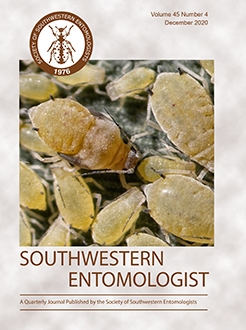The 3-year study compared emergence of corn earworm, Helicoverpa zea (Boddie), between seed-blend and structured-refuge systems in the field. Blocks of 95:5% (Bt:non-Bt) seed blend of Bt (P1401VYHR) and non-Bt (P1498R) maize, Zea mays L., were planted in 2014 and 2015. In 2019, blocks of 90:10% seed blend of Bt (DKC66-29) and non-Bt (DKC66-94) maize were planted. Emergence of H. zea from structured and seed-blend refuge ears was monitored using aluminum screen cages. In addition, data were gathered on the presence of Bt toxins in tip kernels of non-Bt ears from seed blend refuge plots. Significantly fewer H. zea were found in seed blend refuge ears compared to structured refuge ears in 2 of 3 years of the study. Also, the amount of damage by H. zea was significantly less in non-Bt ears from the seed blend than structured refuge ears. The percentage of kernels from non-Bt ears of seed blend refuge with expression of at least one Bt toxin ranged from 52 to 76% during 3 years of the study. Results agreed with past studies that much pollen flows from Bt plants to refuge plants in a seed blend refuge system, resulting in a mosaic of kernels expressing single or multiple Bt toxins. Such a mosaic of non-Bt and kernels with single and/or multiple toxin in a seed blend refuge system can ultimately result in less survival and emergence of H. zea.
How to translate text using browser tools
11 January 2021
Emergence of Corn Earworm, Helicoverpa zea, from Vip3a Seed Blend Versus Structured Refuge Ears of Maize
Suhas S. Vyavhare,
Patrick Porter,
Sydney Glass
ACCESS THE FULL ARTICLE

Southwestern Entomologist
Vol. 45 • No. 4
December 2020
Vol. 45 • No. 4
December 2020




